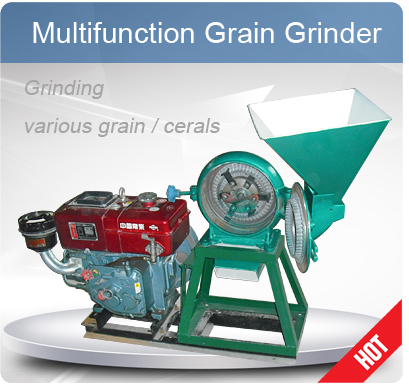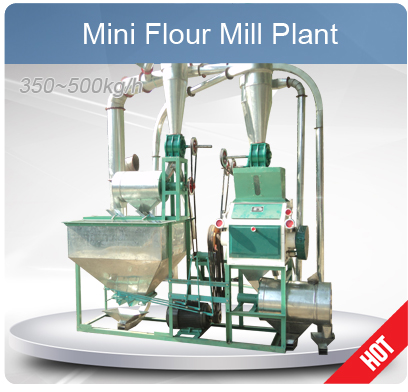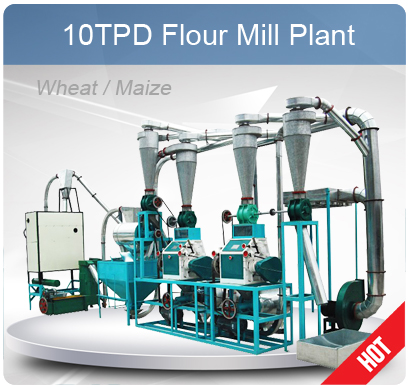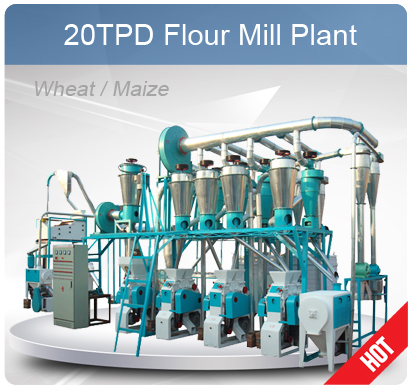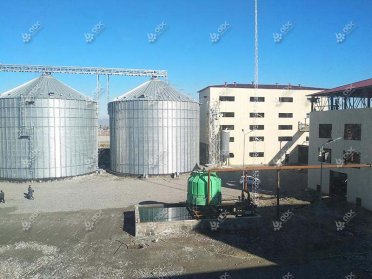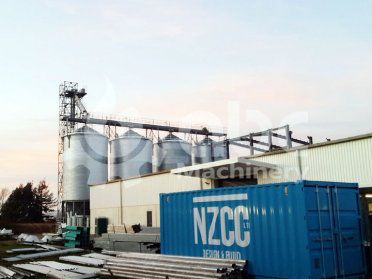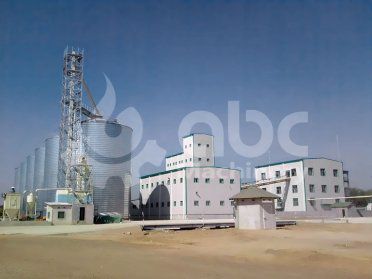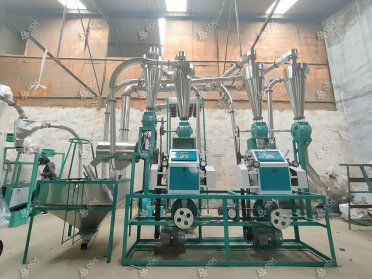Q: How much noise does 160 TPD grain processing machinery produce, and how do you reduce it to 70 – 75 dB?
A: The grain processing machinery is complex, and its sound isolation is poor.
The biggest culprits in terms of noise inside the workshop are the high pressure fan, air compressor, and the root blower, the latter two being placed in a different workshop. While the noise outside the workshop cannot be reduced significantly, it is possible to lower the levels inside by painting the walls with noise-absorbing paint. The noise output from the high pressure fan is about 110 dB, which can be reduced through simple methods. A silencer can be added to the outlet, and after that a tube can be connected to the pulse dust-remover. This will reduce the noise to about 75 dB.
Q: Is it possible to lower the moisture of 300 tonnes of maize from 17 – 23 % to 13 – 14 % in one hour or less?
A: The largest available capacity for the dry tower is 1000 tonnes per day, which is not sufficient to allow this. In order to process 300 tonnes an hour in this way, it would be necessary to invest in seven dry towers, which would be very expensive.
Q: Is it possible to process both maize and wheat in the same 10-tonnes-per-day machinery?
A: The processing of maize and wheat is different. The maize is larger in size, and does not require added water during the processing—wheat, however, needs to be tempered 24 hours prior to processing. Furthermore, it is necessary to remove the bran from wheat before processing. The technology needed for maize and wheat is not the same.
Q: How big is the cover area for 200-tonnes-per-day grain processing machinery and a set of two silos with a capacity of 500 tonnes each?
A: Excluding the warehouse used to store the final product, the cover area is about 60 by 15 meters. Including the warehouse, the area must be 500 m2 larger.
Q: Is a workshop height of 8 - 10 meters sufficient for the 100-tonnes-per-day machinery?
A: No. If the height is 10 meters, it is possible to adjust the workshop by digging up one meter of the floor. However, if the height is 8 meters, it will be too difficult to adjust for.
Q: Can the 1-ton-per-hour flour line process barley, maize, and wheat simultaneously?
A: Processing these three grains simultaneously is very difficult. If you are able to confirm the main material, it is possible to peel prior to milling, in which case the grains will be similar and able to be processed simultaneously.
Q: What are the main differences between your grain processing machinery and Pingle’s?
A: There are not many differences. The process design as well as the equipment selection are similar, but the price of our machinery will be comparatively lower. Furthermore, we offer more flexibility in terms of device configuration, you are able to use all aspects of domestic stand-alone devices, and our machinery is more scientific.
Q: Are you able to produce a pasta line which can process 25,000 tonnes per three months?
A: Our pasta production line is relatively small, and is an expensive option for large-scale production. A pasta line capable of handling 400 kg per hour would cost more than $700,000. Over three months, 25,000 tonnes is equivalent to 12 tonnes per hour. Our largest line can process 1.5 tonnes per hour—if you require machinery capable of processing 12 tonnes per hour, you would have to invest upwards of $15,000,000.
Q: What are the differences between your two available designs for the 30-tonnes-per-day flour line—the one-story and the two-story versions?
A: Our 30-tonnes-per-day flour line can be produced in a vertical and a horizontal design. The two-story (vertical) design presents the flour mill on the bottom level and the double sifter on the top level. This version uses less tubing, and is supported by a beautiful steel frame. The one-story (horizontal) design, ideal if workshop height is an issue, presents the roller mill and double sifter on the same level, without the steel frame.
Q: What are the main differences between the 10-tonnes-per-day wheat flour line, and the 20-tonnes-per-day wheat flour line?
A: The 10-tonnes-per-day wheat flour line includes two roller mills—one for bran material, and one for wheat centre material. The material needs to be recycled in the mill several times, as it is also necessary to mill the germ of the bran material 4 – 5 times.
The 20-tonnes-per-day wheat flour line includes five roller mills—four for grinding the bran material, and one for dealing with the wheat centre material. The material does not need to be recycled in this model. Furthermore, it is equipped with a double sifter, which ensures greater uniformity in the flour.
Q: What are the main differences between cassava and wheat flour?
A: Cassava flour is ground from dry cassava, and the whole, unpeeled cassava is used in the process. It can be added to wheat flour when cooking, but is not used on its own as it is always. Wheat flour is ground by a roller mill, which keeps the bran while separating the bran and the germ. Wheat flour is used for making bread, and the protein in the flour acts as the frame of the bread.
Q: Does a line capable of processing wheat, maize, sorghum, and rice simultaneously exist?
A: The different materials require different processing styles. As such, using the same grain processing machinery for all of them makes it difficult to choose the roller. Furthermore, the flow of materials would be unbalanced, and it would be difficult to clean the machinery due to the materials being mixed up easily.
Q: How much area is needed for 200-tonnes-per-day machinery and a set of two silos with a capacity of 500 tonnes each?
A: The necessary area without the warehouse used to store the final product would be about 60 by 15 meters. With the warehouse, the area would have to be increased by about 500 m2.
Q: What are the main differences between Chinese grain processing machinery and European technology?
A: While the technology is the same, the plants differ in terms of factors such as capacity. Larger plants will be similar, but smaller Chinese plants will not be as accurate as their European counterparts.

 Build Your Future!
Build Your Future!
